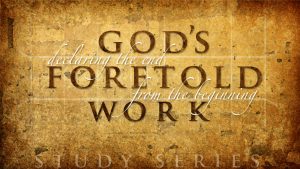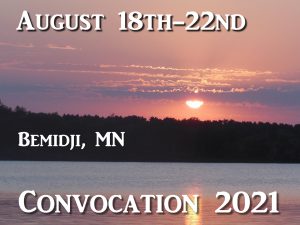The following is a Sidebar to the post: The Near-Far Interpretation to Prophecy
[Note: The difference between pre-mill and a-mill eschatology is simply the question of how much of Israel’s promised salvation came in with the revelation of the gospel? All or part? If all, then nothing more remains for the “natural branches.” In such case, there’s no need of a “literal” millennium (i.e., as a distinct period of time on this earth beyond the present age.)
If nothing remains for “natural Israel,” the only choice is to spiritualize all the language of scripture that describes conditions on earth AFTER the post-tribulational day of the Lord (This process of “re-interpretation” amounts to nothing short of a bold vaporization of large portions of scripture. Such a process is particularly suspect when these sections of prophecy show an abundance of detailed description that defies easy reduction to mere symbol or poetic metaphor.
To handle prophetic speech in this way suggests something more condemnable than mere questions of hermeneutics. It permits prior theological commitments to impose on scripture what it does not say, while it denies much that scripture does say. Regardless of original intent, the end result is unbelief concerning what God has infallibly ‘said’. A faulty hermeneutic risks adding support to the question first raised by Satan, “Has God really said?” It is that serious. We are not simply engaged in academic discussion of marginal significance.)
For the prophets, no end was in sight that did not include the final deliverance of the Jewish nation and the resurrection of the righteous at the end of an unequaled tribulation of brief duration (Dan 12:1-2 with Jer 30:7; Mt 24:21). Only an “all righteous” nation (Isa 60:21; Jer 31:34), dwelling securely forever in their own land, would be sufficient to fulfill and publicly vindicate the everlasting covenant, as it stood written. This, of course, requires a post-day of the Lord fulfillment on this earth.
For the covenant to realize all its promised goals according to the plain language and manifest intent of the prophets, a millennium on earth becomes a theological necessity, even before its chronological duration is later given by John. If, on the other hand, “all” the promises made to natural Israel receive their complete fulfillment in this present age (as taught by a-mill eschatology), then WHY have a millennium at all? Why not go straight to the new heavens and earth, as in a-mill eschatology? If a future great tribulation can come and go without the covenanted salvation of the present enemies of the gospel, then a literal millennium would seem rather superfluous, if all the promises to Israel are fulfilled within the scope of the present age.]
Return to the post, The Near-Far Interpretation to Prophecy




